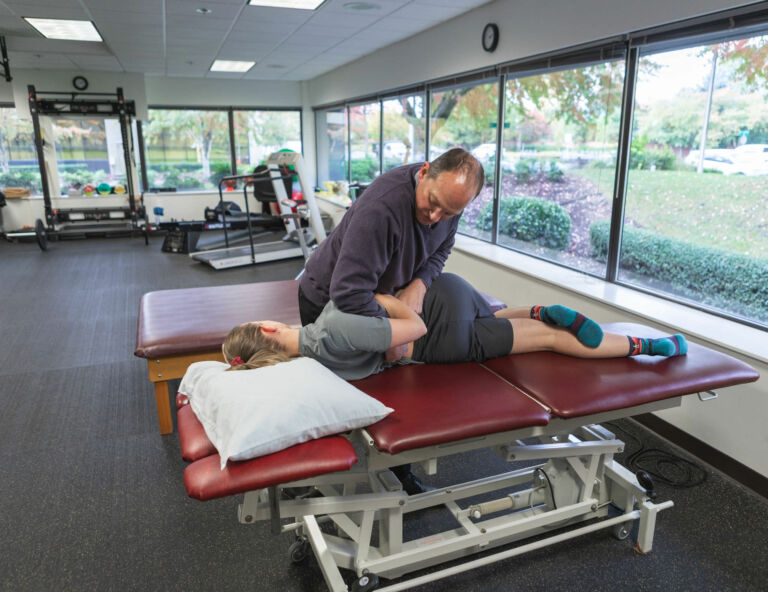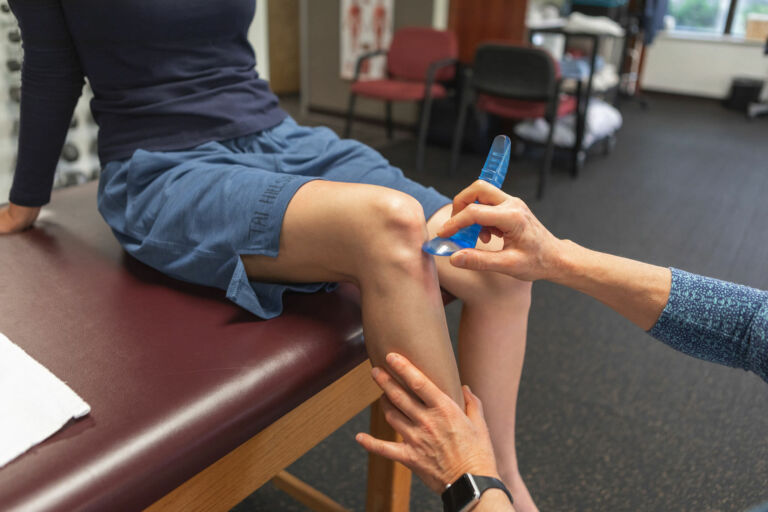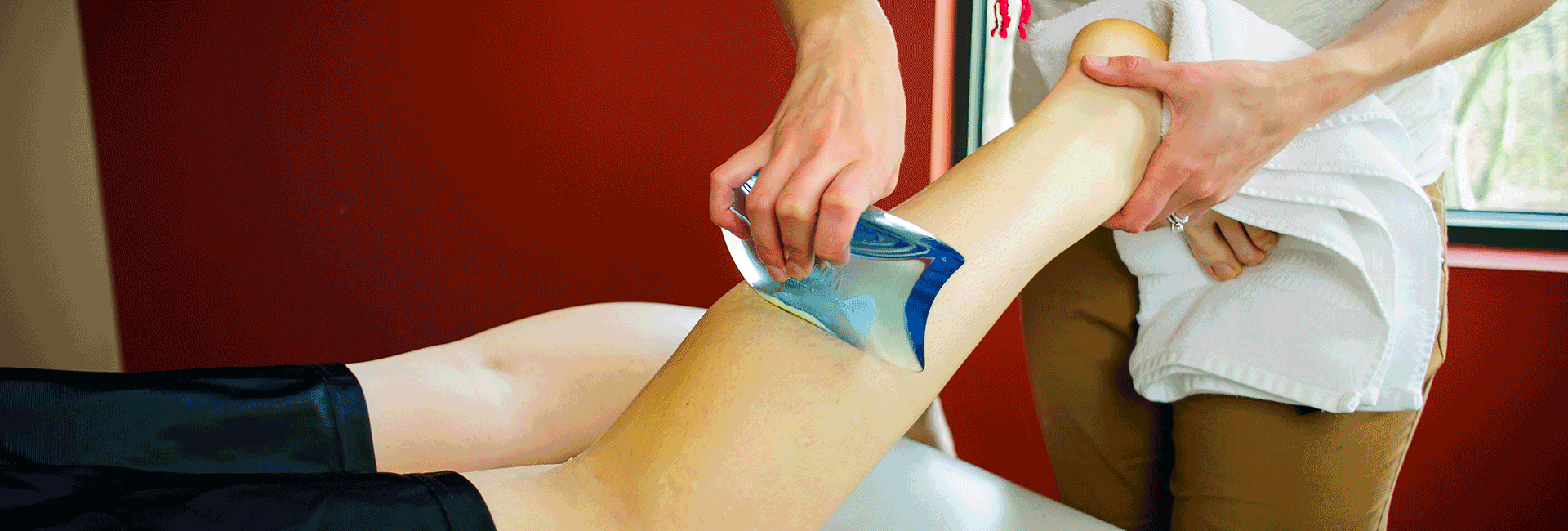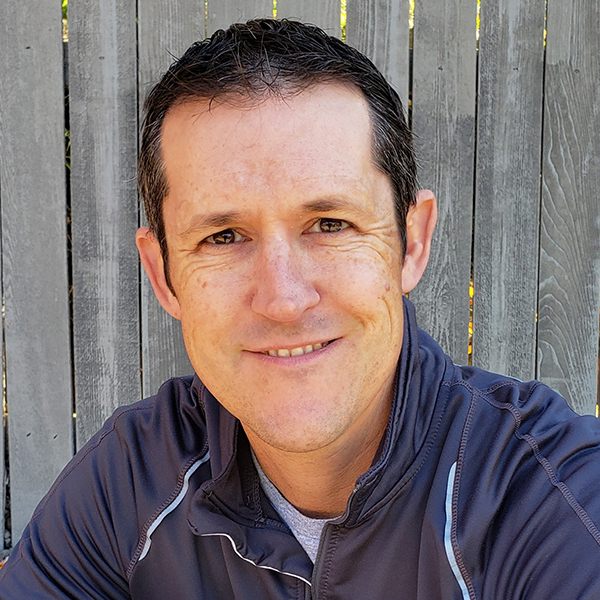Physical therapy is about treating the whole body utilizing a variety of techniques and methods, to get to the true source of the issue at hand. While many physical therapists specialize in certain techniques and/or areas of expertise, manual therapy, often called hands-on therapy, is a technique most therapists utilize. Under the umbrella of manual therapy, there are multiple variations and advanced applications including the Fascial Distortion Model (FDM) and Augmented Soft Tissue Mobilization (ASTYM).
Both of these two manual therapy techniques have proven beneficial in achieving optimal patient outcomes, and many of our PTs have found great success utilizing them with a wide range of patient conditions.
Understanding FDM
To understand the fascial distortion model, it is important to know what fascia is. Fascia includes the entire web of connective tissue in the body, which envelopes and supports our muscles, organs and skeletal structures. Without fascia, our bodies would lack structural integrity and the ability to move efficiently.
Injuries, including those caused by trauma and those due to repetitive stress, can cause distortions in the fascial system, which leads to pain, decreased mobility and musculoskeletal dysfunction. FDM —taught through the AFDMA and other organizations around the world — is a type of precise manual therapy involving hands-on techniques that specifically assesses and treats fascial distortions.
Originally developed by Dr. Stephen Typaldos, D.O., this patient-centered technique uses specific feedback from the patient to guide the diagnosis and treatment processes. There are six principal types of fascial distortions, which each have signature clinical presentations.
By focusing on and analyzing body language clues, movement patterns and hand gestures, therapists can determine the type of injury causing a patient’s pain and movement dysfunction and which distortion category the injury falls within.
FDM employs an approach that is more than a soft tissue or myofascial release technique utilized in traditional manual therapy. FDM treatment is dictated by the type or category of fascial distortion present and provides a comprehensive and targeted approach to address the underlying cause of pain and dysfunction.

The Fascial Distortion Model offers a versatile approach to addressing various musculoskeletal conditions. Its application extends to a wide range of common ailments, including sprains/strains, repetitive stress injuries, whiplash, neck pain, shoulder pain, low back pain, frozen joints, headaches and migraines, plantar fasciitis, and chronic pain conditions.
Understanding ASTYM
ASTYM is a manual, non-invasive, tool-based technique focusing on healing the body from the inside out. A specialized form of soft tissue mobilization, ASTYM focuses on stimulating the regeneration and healing of damaged tissues, in turn alleviating pain and improving function.
ASTYM utilizes specialized plastic tools/instruments to detect and treat abnormal tissue texture and movement. Depending on what part of a patient’s body is being treated, a physical therapist will select one of three sizes of tool — small, medium, and large. Each is specifically designed to allow the PT to precisely target dysfunctional tissues.

Utilizing a stroking or combing pattern that specifically follows the anatomy and how the tissues lie down within the body region, PTs employ ASTYM to stimulate the body’s healing response in any area which has tissue changes such as the buildup of abnormal or scar tissue from strain or injury. Additionally, ASTYM tools trigger a patient’s physiological response through mechanical exposure. Many ASTYM-certified providers also find the use of ASTYM tools alleviates stress and strain on their hands during manual therapy, leading to a more thorough and beneficial treatment session.
ASTYM has shown promising results in treating a wide range of musculoskeletal conditions causing pain and restrictions in movement. It is particularly helpful as part of a custom treatment plan for chronic soft tissue issues such as tendonitis, sprains/strains, surgical scarring/restricted motion, and joint stiffness.
FDM and ASTYM are both physical therapy modalities that may be used independently, or in conjunction with other modalities to enhance the effectiveness of traditional rehabilitation methods. Consult with a qualified physical therapist to explore these techniques and their suitability for your specific needs and goals.

Start your physical therapy journey today.
As physical therapists, we know the importance of movement for overall health and well-being. From injury recovery to achieving optimal performance, our passion is to help every patient reach their goals and live an active, pain-free life. Get started with PT today!

